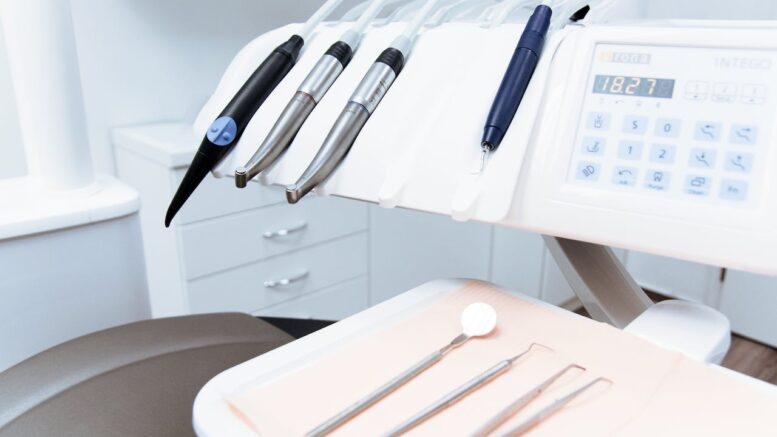Dental implants, widely acknowledged for their remarkable effectiveness in addressing tooth loss, have historically been fabricated employing traditional techniques. Nonetheless, the advent of 3D printing has heralded a transformative era characterized by exceptional precision, customized solutions, cost-efficiency and improved patient outcomes within the domain of dental implantology.
This scholarly article embarks on an exploration of the notable merits inherent to 3D-printed dental implants, elucidating their precision, individualized attributes, streamlined production workflows, economic advantages, biocompatibility, risk mitigation during surgical interventions and the facilitation of minimally invasive procedures.
Precision and Accuracy: A Paradigm Shift
The foremost benefit of dental implants using 3D printing resides in their unparalleled precision and accuracy. Traditional implant production methods, which were labor-intensive and often prone to minute discrepancies, have given way to the extraordinary precision achievable through 3D printing. With 3D printing, implants can be crafted with micro-level accuracy, ensuring a seamless fit within the patient’s oral cavity. This high degree of precision minimizes potential complications, such as misaligned implants, ultimately preventing discomfort and the need for additional corrective procedures.
Customization and Tailored Solutions
3D printing technology empowers dental professionals to craft implants that are uniquely customized to meet the distinct requirements of each patient. Implants can now be designed to perfectly mirror the patient’s natural teeth in terms of shape, size and color. This unprecedented level of customization enhances both the aesthetic and functional aspects of dental implants, leading to heightened patient satisfaction and superior oral health outcomes.
Furthermore, patient-specific implants can be meticulously designed to fit seamlessly within the available space, making them ideal for complex cases where traditional implants might not suffice.
Expedited Production Timelines
3D printing has revolutionized the implant manufacturing process by significantly reducing lead times, marking a remarkable departure from the labor-intensive traditional methods. The conventional approach involved intricate and time-consuming stages such as meticulous molding, casting and meticulous finishing, frequently leading to extended waiting periods for patients in need. In sharp contrast, 3D printing expedites the design and manufacturing phases through precise digital scans and advanced 3D modeling, resulting in considerably reduced waiting times.
This expedited process not only enhances patient convenience but also accelerates the overall treatment and post-operative recovery, contributing to more efficient and patient-centered dental care.
Cost-Efficiency: Balancing Investment and Returns
While the initial investment in 3D printing technology can be substantial, the long-term cost savings are noteworthy. The precision and efficiency inherent to 3D printing technology diminish the need for costly adjustments and revisions. The enhanced customization of implants ensures a superior fit, reducing the probability of complications and the necessity for expensive corrective procedures. Consequently, dental professionals can deliver high-quality, cost-effective solutions that benefit both the patient and the practitioner.
Enhanced Biocompatibility
Biocompatibility stands as a fundamental cornerstone in the achievement of successful dental implants. By harnessing the capabilities of 3D printing, dentistry can effectively employ biocompatible materials, exemplified by titanium alloys, renowned for their excellent compatibility with the human body. Implants meticulously tailored to harmonize with the patient’s distinctive anatomical features serve to significantly curtail the probability of undesirable reactions or implant rejection, thereby bolstering the longevity and resilience of the implanted structures. Consequently, the utilization of 3D-printed dental implants not only enhances patient well-being and comfort but also exemplifies the future of biocompatible implantology.
Mitigated Surgical Risks
The precision and customization offered by 3D-printed dental implants not only enhance the accuracy of the surgical procedure but also contribute to reduced surgical risks. When the implant aligns precisely with the patient’s unique oral anatomy, the surgical process is inherently less invasive, lowering the potential for complications. This meticulous fit and reduced surgical complexity not only expedite the recovery process but also alleviate post-operative discomfort, promoting a smoother patient experience.
As a result, patients encounter fewer complications, leading to an overall safer, more comfortable and more patient-centric approach to dental implant procedures.
Minimally Invasive Procedures: Guiding the Way
3D printing technology has spurred the development of innovative implant procedures, such as guided implant surgery. By employing 3D-printed surgical guides, dental professionals can execute less invasive procedures with pinpoint accuracy. This approach minimizes trauma to adjacent tissues and bone, thereby reducing post-operative pain and expediting the healing process. Minimally invasive procedures are particularly beneficial for patients with compromised oral health or those necessitating multiple implants.
Conclusion
The integration of 3D printing technology into the realm of dentistry has ushered in a new era of possibilities, profoundly enhancing dental implant procedures. The precision, customization, expedited production, cost-effectiveness, biocompatibility, diminished surgical risk and minimally invasive procedures offered by 3D-printed dental implants have brought about a transformation in patient outcomes and experiences.
These advancements not only elevate patient satisfaction but also fortify the long-term success of dental implant procedures. As 3D printing technology continues to evolve, it is poised to usher in further innovations, establishing 3D-printed dental implants as the gold standard in tooth replacement therapy.
